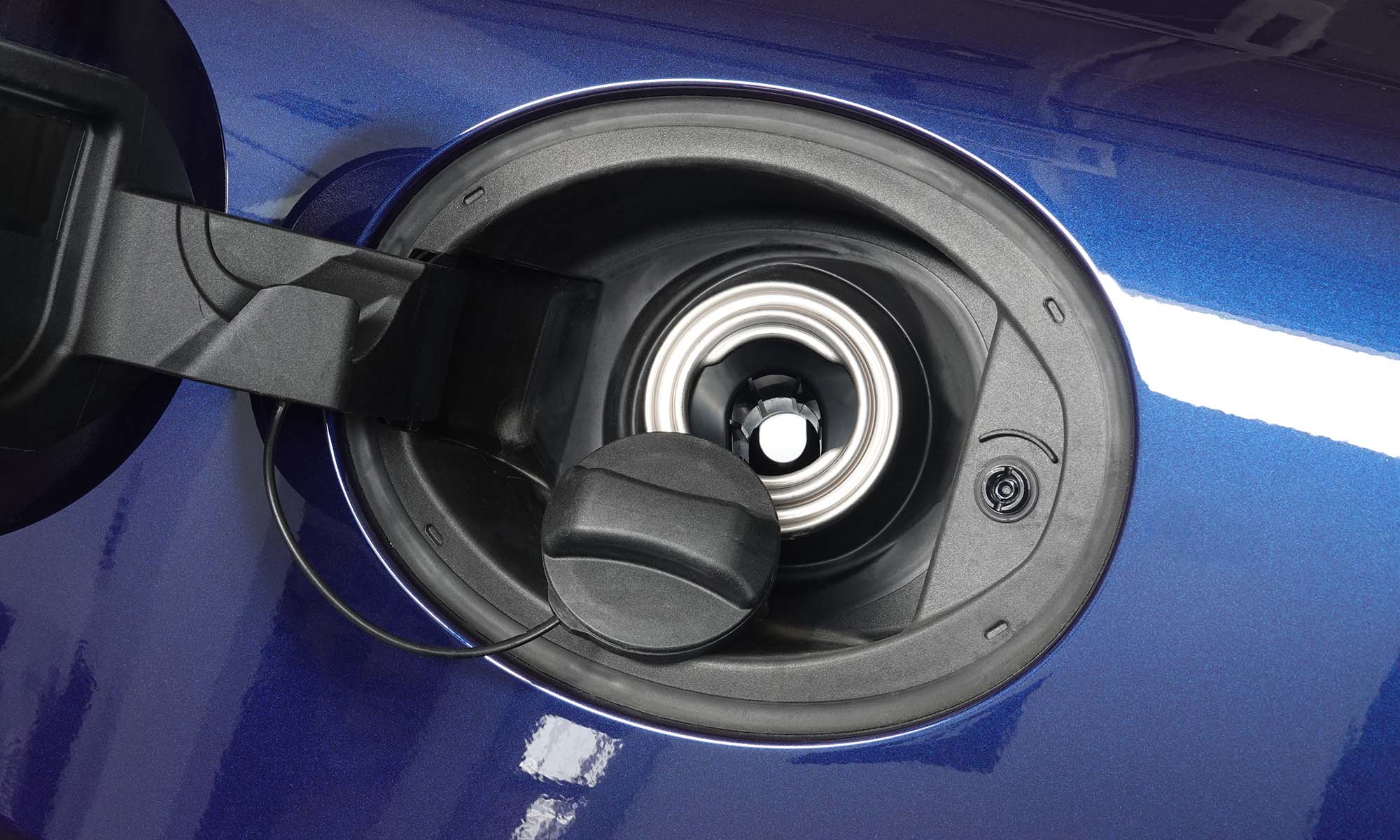What Happens If I Get Water in My Car’s Gas Tank?

The fall and winter can bring about a lot of different weather conditions, including rain, sleet and snow. But while taking the time to update your car’s winter emergency kit and preparing yourself for potential winter car repairs is essential as a car owner, some issues may not be at the top of your mind.
For example, one of the most common issues car owners can face during this time of year is forgetting to close their car’s gas cap, allowing rain and snow to get into their fuel tank. And when water gets in your fuel tank, it could lead to potentially serious (and costly) issues. That’s why learning the signs of water in your car’s gas tank and knowing the steps you should take when dealing with this issue is vital.
What Happens If Water Gets in Your Gas Tank
The fuel system in your vehicle is designed to transport fuel through your fuel pump, fuel filter, fuel lines, and fuel injectors. These components are designed specifically for gasoline (or diesel) only, so the presence of water or any other liquid in your gas tank can cause these parts to malfunction or fail altogether.
In general, though, there are several ways that water can get into your gas tank. The first is often the most common: accidentally leaving your gas cap off after you fill-up the tank and having rain or snow get in. This is a bigger concern in the fall and winter when there are higher chances of severe weather. The second issue is far less common and results when a gas station’s fuel has water in it. Still, while this is not a very common issue, it does happen from time to time.
Symptoms of Water in Your Gas Tank
You need to know the symptoms to diagnose whether or not you have water in your gas tank. And while you can often identify other common issues thanks to your dashboard warning lights, like the check engine light illuminating, that’s not always the case with water in the gas tank. That’s why it’s important to look out for the following symptoms if you believe you have water in your car’s gas tank:
Sputtering or Stalling Issues
The fuel in your vehicle travels from the gas tank to the fuel injectors, where it ignites in the combustion chamber. But when a small amount of water enters the combustion chamber, you can experience sputtering or stalling issues.
Car Refuses to Start
While having water in your tank can cause sputtering or stalling, having too much water could result in the car not starting at all. Mainly, if your vehicle seems to be trying to start but having issues, there may be a small amount of water in your gas tank, causing the fuel to be diluted to the point where it will not combust. If you have a lot of water in your gas tank, you can risk hydrolocking your car’s engine, as water cannot be compressed in the combustion chamber.
Surging or Sudden Decrease of Power
If your vehicle has started to surge or you’ve noticed an increase or decrease in power, there may be water in your gas tank. Like the stalling issues, small amounts of water in your fuel will cause your engine to misfire. This causes a vehicle to surge or lose power intermittently as the combustion process is not as efficient as it would be with just gasoline or diesel fuel.
Rust in Gas Tank
Rust in your gas tank is a tell-tale sign that you may have used some contaminated fuel, but this can only be diagnosed if you remove the tank from the vehicle. However, before taking that extreme step, you can potentially diagnose rust when swapping out a fuel filter. Specifically, you may notice a rust-colored liquid coming from your fuel lines. This indicates the presence of rust and corrosion in your tank, which a mechanic can verify by removing the tank and inspecting it.
Fuel Economy Has Gone Down
If you have noticed the fuel economy in your vehicle has gone down, there are a variety of different issues that can cause it. Bad gas is one of the most common causes of reduced fuel mileage on well-maintained vehicles. If you have verified that your air filter is clean, you have no other trouble codes, and your car has been maintained, you might have water in your fuel tank.
While water in your car’s gas tank can lead to some potential issues, others can be caused by everyday wear and tear. And without the proper coverage, any breakdowns or repairs you may have to deal with will be left to you to pay. But, when you have the coverage of an Endurance vehicle protection plan, you can get peace of mind knowing that Endurance will protect your car’s vital components from unexpected repairs and breakdowns. And while water in the tank might not be a covered repair, you’ll still be able to get help with complimentary 24/7 roadside assistance and towing just by being an Endurance customer. That means that if you get water in the gas tank, Endurance will be there to help take you to the nearest mechanic for help.
What to Do If You Get Water in Your Gas Tank?
You must take action immediately if you believe you have even a little water in your gas tank. Depending on the vehicle, even the smallest amount of water in your gas tank can cause catastrophic damage to your engine, so taking the necessary steps right away to protect your vehicle is essential.
Get Help from a Mechanic

Your best solution for getting water out of your gas tank is to get help from your local mechanic. A professional mechanic will have the tools and knowledge needed to drain your tank and fuel lines to ensure you do not have any water left in your fuel system. They can also inspect your engine for any damage that may have been caused by water in your fuel tank.
Use a Fuel Additive/Octane Booster
If you are looking for a DIY solution to remove water from your fuel tank, you can use a fuel additive or octane booster, such as ISO-HEET. These act as water removers that are safe on the vehicle and can raise the octane level of your gasoline to help evaporate any water in your tank.
Drain & Replace the Gas
Lastly, if you have experience working on vehicles, you can drain and replace the gas. Mainly, you can remove the gas tank, empty it, and let it dry out to ensure no water remains. Then, you’ll have to clear out the fuel lines to ensure all of the fuel is out. After you reinstall the tank, you can replace the gas, and you will be good to go.
However, unless you have extensive experience working on your vehicle, it’s not recommended to do this step by yourself as you could risk further damaging it or even potentially voiding any warranty coverage you have. Instead, look to a professional mechanic if this is your chosen method to help remove water from your gas tank. This will ensure that you won’t be at risk of voiding any coverage while also ensuring you’re getting the best service possible.
How Endurance Can Help with Vehicle Breakdowns
While there are many ways to prevent getting water in your gas tank, there are instances where it is unavoidable, such as bad gas from your local gas station or forgetting to close your gas cap during bad weather or even getting a car wash. But, while it could damage your vehicle, recognizing the signs of water in the gas tank and knowing the steps you need to take can help avoid further damage and even costlier repair bills. And when it comes to other unexpected breakdowns and car repairs caused by wear and tear use, Endurance has you covered.
Like a car’s original factory warranty coverage, each Endurance vehicle protection plan is designed to give you peace of mind when faced with costly repair bills. But unlike extended warranty coverage from automakers, Endurance can give you the same kind of comprehensive coverage without the drawbacks. For instance, while coverage from your automaker may limit you to just the dealership for service, as an Endurance customer, you’ll be able to take your car to any certified mechanic or repair facility of your choice, including the dealership. You can even customize your coverage to fit your specific needs and budget, including finding basic powertrain coverage at just $79 per month.
But that’s not all, as Endurance customers automatically receive complimentary services like 24/7 roadside assistance and towing, trip interruption coverage and rental car reimbursements. You’ll even be eligible to enjoy a full year of free Elite Benefits, including tire repairs/replacements, key fob replacements, and much more with any Endurance protection plan.
Don’t wait until you’re stuck with an unexpected repair bill and request your free, no-obligation quote today. Or, to learn more about how Endurance can help you, call a member of the award-winning Endurance customer care team at (800) 253-8203. And be sure to visit the Endurance blog for even more information to help you as a car owner, including finding even more DIY car care tips, auto expert buying guides, extended warranty coverage comparisons and more.













Since the age of 16, Keith has been immersed in the automotive industry, beginning his career by helping his dad fix vehicles at a young age. Keith now owns his own family-run, ASE Certified repair shop, A+ Autocare. At his shop, he focuses on building trusting relationships with his community through exceptional customer service. Read more about Keith.